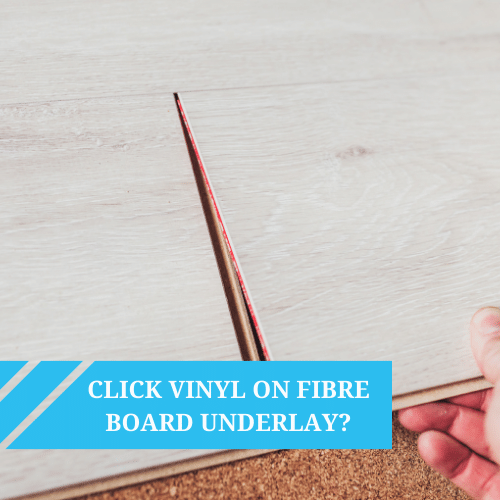We use cookies to make your experience better. To comply with the new e-Privacy directive, we need to ask for your consent to set the cookies. Learn more.
How to Acclimate Laminate Flooring & Vinyl Flooring
Once you’ve purchased your new laminate or vinyl floor, it’s understandable you’ll be excited to get it fitted. However, before you jump right in, there's a vital step in the process that shouldn’t be ignored
Once you’ve purchased your new laminate or vinyl floor, it’s understandable you’ll be excited to get it fitted. However, before you jump right in, there's a vital step in the process that shouldn’t be ignored.


Acclimating any type of flooring before you install it is important. This basically means letting the flooring materials adapt to the environment of your home before you lay them down. This doesn’t just ensure your new floor looks great, but it also helps boost its longevity.
So why is acclimating a new floor important, and how do you do it? In today's blog, that's exactly what you’re going to find out.
Understanding the Need to Acclimate Flooring
Laminate and vinyl flooring may look tough, but they're more sensitive than you might think, especially when it comes to changes in temperature and humidity.
Just like solid and engineered wood, these flooring materials can expand or contract in different environmental conditions. This can lead to unsightly gaps, buckling, or even warping over time, potentially damaging the floor and proving costly to repair.
By giving your flooring the time it needs to adapt to the environment, you reduce the risk of running into these stressful and expensive problems.
Be aware that even sheet vinyl floors should be acclimatised before being fitted. So, whether you’re choosing luxury vinyl tiles or sheet vinyl, you should always acclimatise the floor by manufacturer instructions.


How to Acclimate Laminate Flooring and Vinyl Flooring
Now that you understand why acclimatising your vinyl or laminate floor is important, it’s time to learn how to do it. Thankfully, it’s more straightforward than it sounds.
While you should always follow manufacturer guidelines based on your specific floor, here’s a general step-by-step guide you can follow:
Step 1: Make Sure You Store the Flooring Correctly - Once you've got your new floor, it’s recommended you place the unopened boxes in the room where they'll be installed. Open the end of the box to allow the air to circulate around the planks. This gives them a chance to adapt to the temperature and humidity levels in the environment.
Step 2: Check Moisture Levels - Using a moisture metre can help you determine if the room has a moisture problem. While both laminate and vinyl flooring is more resistant to warping when exposed to moisture, they aren’t immune to damage if the levels are too high. If there is a high level of moisture in the room, you can take precautions such as using a moisture-resistant flooring underlay prior to fitting.
Step 3: Ensure Proper Air Circulation - While the floor is acclimating, it's essential to maintain regular air circulation in the room. This will help balance the temperature and humidity level, helping the floor to adapt more effectively.
Step 4: Wait and Monitor - Patience is key. A minimum of 24 to 72 hours is usually recommended for the vinyl or laminate to acclimate. However, depending on the specific product and the conditions it is exposed to, it might need a bit longer.
Step 5: Consult the Pros - Always check product's guidelines. They may have specific recommendations based on the flooring type or brand.
So, whether you're installing laminate flooring or going down the vinyl route, remember to give them enough time to acclimate. This can make the difference between a flawless finish and potentially expensive issues later down the line.
We also recommend taking the time to compare the two options. You can find out everything you need to know about both types of flooring in our blog including the pros and cons of laminate flooring.


How Long Does Flooring Need to Acclimate?
As we mentioned earlier, it is generally recommended that laminate and vinyl flooring should be acclimatised for up to 72 hours. However, the exact amount of time needed can vary depending on a few factors.
The specific floor you have chosen, alongside the environment it will be fitted in play a large role in how long it takes to acclimatise. Did you know for example, that the region you live can impact the acclimatisation period? Different parts of the UK experience differing temperatures and humidity levels.
Different floors also have their own unique requirements. If the floor will be fitted in a room with regular temperature and humidity fluctuations, it could need a bit longer to adjust.
Always keep the manufacturer's recommendations close to hand. Following the specific guidelines provided ensures that your flooring adjusts as it should, resulting in a successful and long-lasting installation.
Key Takeaways
While it can be tough waiting for your new floor to acclimatise, it will ultimately save you time, money, and stress. As keen as you are to see the results of your vinyl or laminate floor, if you skip the acclimatising period, you may not get to enjoy it for long.
Acclimation ensures your floor fits in perfectly with its new environment. By allowing adequate time for your flooring materials to adjust, you can enjoy a floor that’s not only beautiful, but also built to last.
Ready to upgrade your flooring? Explore our wide selection of laminate flooring and vinyl flooring options today.









